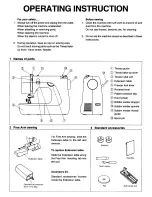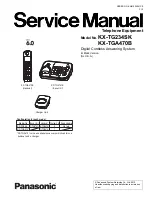
-
1
Please read and comply with
these original instructions prior
to the initial operation of your appliance and
store them for later use or subsequent own-
ers.
Before first start-up it is definitely neces-
sary to read the safety indications no.
5.956-250!
Your sales outlet should be informed about
any transit damage noted when unpacking
the product.
–
Warning and information plates on the
machine provide important directions
for safe operation.
–
In addition to the information contained
in the operating instructions, all statuto-
ry safety and accident prevention regu-
lations must be observed.
Danger
Risk of injury, risk of damage!
Observe the weight of the appliance when
you load it!
Do not use a forklift.
Use a suitable ramp or a crane to load
the appliance!
Observe when using a ramp:
Ground clearance 70 mm.
If the machine is delivered on a pallet,
you must create an unloading ramp us-
ing the boards provided.
You will find the instructions for this pro-
cedure on page 2 (inside of cover).
Important instruction
: every board
must be attached with at least 2 screws.
Danger
Risk of injury, risk of damage!
Danger
Risk of injury!
Danger of tipping if gradient is too high.
–
The gradient in the direction of travel
should not exceed 18%.
Danger of tipping when driving round
bends at high speed.
–
Drive slowly when cornering.
Danger of tipping on unstable ground.
–
Only use the machine on sound surfac-
es.
Danger of tipping with excessive sideways
tilt.
–
The gradient perpendicular to the direc-
tion of travel should not exceed 10%.
–
It is important to follow all safety instruc-
tions, rules and regulations applicable
for driving motor vehicles.
–
The operator must use the appliance
properly. He must consider the local
conditions and must pay attention to
third parties, in particular children, when
working with the appliance.
–
The appliance may only be used by per-
sons who have been instructed in han-
dling the appliance or have proven
qualification and expertise in operating
the appliance or have been explicitly
assigned the task of handling the appli-
ance.
–
The appliance must not be operated by
children, young persons or persons
who have not been instructed accord-
ingly.
–
It is strictly prohibited to take co-pas-
sengers.
–
Ride-on appliances may only be started
after the operator has occupied the driv-
er's seat.
Please remove the ignition key, when
not in use, to avoid unauthorised use of
the appliance.
Never leave the machine unattended
so long as the engine is running. The
operator may leave the appliance only
when the engine has come to a stand-
still, the appliance has been protected
against accidental movement, if neces-
sary, by applying the immobilization
brake and the ignition key has been re-
moved.
Danger
Risk of injury!
–
Do not close the exhaust.
–
Do not bend over the exhaust or touch
it (risk of burns).
–
Do not touch the drive motor (risk of
burns).
–
Exhaust gases are poisonous and haz-
ardous to health, do not inhale them.
–
The engine requires approx. 3-4 sec-
onds to come to a standstill once it has
been switched off. During this time, stay
well clear of the working area.
–
In emergencies, destroy the windows
with a hammer.
Note
The emergency hammer is located in the
foot area, underneath the driver seat.
–
Only use accessories and spare parts
which have been approved by the man-
ufacturer. The exclusive use of original
accessories and original spare parts
ensures that the appliance can be oper-
ated safely and troublefree.
–
At the end of the operating instructions
you will find a selected list of spare
parts that are often required.
–
For additional information about spare
parts, please go to the Service section
at www.kaercher.com.
Hauptverband der gewerblichen Beruf-
sgenossenschaften e.V. (HVBG / Germa-
ny). Liquified gases (propellants) are
butane and propane or a mixture of butane/
propane. They are available in special cyl-
inders. The operating pressure of these
gases depends on the outside tempera-
ture.
Danger
Risk of explosion! Do not handle liquified
gas like petrol. Petrol evaporates slowly,
liquified gas immediately turns into gas.
The risk of gas spreading in the room and
getting ignited is thus higher in case of liq-
uefied gas than in petrol.
Danger
Risk of injury! Use only liquefied gas cylin-
ders with propellant filled according to DIN
51622 of A or B quality, depending on the
surrounding temperature.
Caution
Use of cooking gas is strictly prohibited. For
the gas engine, use only liquid gas mix-
tures of propane/ butane or their mixtures
where the mixing ratio lies between 90/10
to 30/70. On account of better cold start be-
haviour even at low outside sub-zero tem-
peratures (below 0° C / 32 °F) always
prefer a mixture with a higher propane
share because evaporation takes place
even at low temperatures.
–
All persons handling liquid gases are li-
able to acquaint themselves with the
special properties of the liquefied gases
for hazard-free handling of operations.
The current documentation is always to
be kept with the sweeper.
Contents
Safety instructions . . . . . . .
EN . . 1
Function . . . . . . . . . . . . . . .
EN . . 3
Proper use . . . . . . . . . . . . .
EN . . 3
Environmental protection . .
EN . . 3
Operating and Functional Ele-
ments . . . . . . . . . . . . . . . . .
EN . . 4
Before Startup. . . . . . . . . . .
EN . . 5
Start up . . . . . . . . . . . . . . . .
EN . . 5
Operation . . . . . . . . . . . . . .
EN . . 6
Transport. . . . . . . . . . . . . . .
EN . . 7
Storage . . . . . . . . . . . . . . . .
EN . . 7
Shutdown . . . . . . . . . . . . . .
EN . . 7
Maintenance and care . . . .
EN . . 7
EC Declaration of Conformity
EN . 12
Warranty . . . . . . . . . . . . . . .
EN . 12
Troubleshooting . . . . . . . . .
EN . 13
Technical specifications . . .
EN . 14
Safety instructions
General notes
Unloading tips
Unladen weight (without attach-
ment sets)
900 kg *
* If upgrade kits are installed, the weight is
respectively higher.
Drive mode
Appliances with combustion engine
Machines with driver cabin
Accessories and Spare Parts
Safety regulations for LPG vehicles
Liabilities of the factory management
and the employee
3
EN
Summary of Contents for KM 130/300 R LPG
Page 1: ...w w w k a e r c h e r c o m r e g i s t e r a n d w i n KM 130 300 R LPG 59641380 08 13...
Page 2: ...2...
Page 18: ......




































